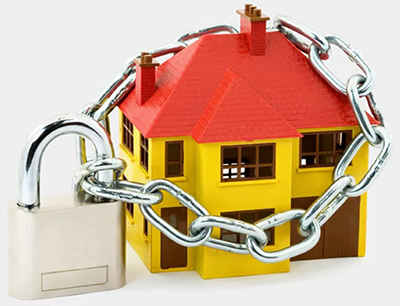What is a risk management strategy you could use to protect your home?
Here’s a detailed list of risk management strategies to protect your home:
Installation of Security Systems

Installing a home security system with cameras, alarms, and motion sensors can significantly enhance the security of your home.
Example: Installing a video doorbell camera allows you to record footage of visitors, which can be helpful in case of unauthorized access.
Reinforcing Doors and Windows
Upgrading standard doors and windows to ones with stronger materials or adding additional locks and bolts can make it harder for intruders to break in.
Example: Installing deadbolt locks on exterior doors adds an extra layer of security, as they are more resistant to forced entry.
Proper Lighting
Keeping the perimeter of your home well-lit, especially during nighttime, can deter potential intruders and make it easier to detect any suspicious activity.
Example: Installing motion-activated lights in the backyard and around entry points can startle intruders and draw attention to their presence.
Neighborhood Watch Programs
Participating in or establishing a neighborhood watch program fosters a sense of community security and encourages neighbors to look out for each other.
Example: Organizing regular meetings or communication channels among neighbors to discuss any security concerns or share information about suspicious activities in the area.
Regular Maintenance and Inspection
Conducting regular inspections of your home’s exterior, including checking for any damaged or weak spots, ensures that potential security vulnerabilities are identified and addressed promptly.
Example: Inspecting fences, gates, and garage doors for signs of wear and tear helps prevent them from becoming easy entry points for intruders.
Securing Valuables
Keeping valuable items – example: jewelry, electronics, and important documents in a secure safe or hidden location can minimize the potential losses in case of a burglary.
Example: Investing in a fireproof and waterproof safe to store important documents, passports, and valuable possessions provides added protection against theft and disasters like fire or flooding.
By implementing these risk management strategies, homeowners can significantly reduce the likelihood of security breaches and protect their property and loved ones effectively.
Interesting statistics

- Home Burglary Statistics
According to the FBI, in the United States, a home burglary occurs approximately every 23 seconds. This highlights the importance of ensuring robust protection for your residence.
- Impact of Security Cameras
Research shows that homes without security systems are 300% more likely to be broken into. Installing security cameras can deter potential intruders and provide valuable evidence in case of a break-in.
- The Role of Lighting
Well-lit homes are less likely to be targeted by burglars. In fact, a study found that proper outdoor lighting reduces the risk of burglary by up to 39%. Motion-activated lights are particularly effective in deterring intruders.
- Neighborhood Watch Programs
Communities with active neighborhood watch programs experience lower crime rates. Studies indicate that such programs can reduce crime by as much as 16% in participating neighborhoods.
- The Rise of Smart Home Security
With advancements in technology, smart home security systems have become increasingly popular. These systems allow homeowners to remotely monitor and control their home’s security features using smartphones or other devices.
- The Importance of Safes
Nearly 30% of burglaries occur through an unlocked door or window. Safes provide a secure storage solution for valuables, important documents, and firearms, reducing the risk of theft and unauthorized access.
These facts underscore the significance of implementing effective security measures to protect your home and belongings.












